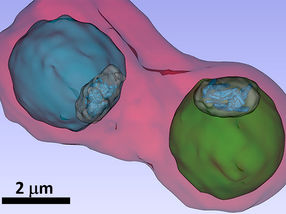Sky-high methane mystery closer to being solved, UCI researchers say
Commercial natural gas was likely major factor in late-20th century stabilization
Increased capture of natural gas from oil fields probably accounts for up to 70 percent of the dramatic leveling off seen in atmospheric methane at the end of the 20th century, according to new UC Irvine research published in the journal Nature.
"We can now say with confidence that, based on our data, the trend is largely a result of changes in fossil fuel use," said chemistry professor Donald Blake, senior author on the paper.
Methane has 20 times the global warming potential of carbon dioxide, although CO2 is filling the atmosphere in far larger amounts. After decades of increases due to worldwide industrial and agricultural activity, the tapering off of methane from the 1980s through 2005 was remarkable. Scientists have long wrestled with the cause.
Blake and his team, who have conducted the world's longest continuous methane and ethane sampling, said close scrutiny of their data shows that the major factor was most likely the trapping and sale of natural gas for use as a fuel source, which sharply reduced the skyward venting and flaring of methane from oil fields. Methane is the main ingredient in natural gas.
"It used to just be burned off as a waste product," said lead author Isobel Simpson, a UCI research associate. "The reason this is important is because methane is a potent greenhouse gas, second in importance only to carbon dioxide. We can't make real progress on climate change without tackling carbon dioxide, but bringing methane under control would certainly help."
Since 2007, levels have started to climb again, adding urgency to the scientific mystery. Many researchers have tried to determine what prompted the decline, including others at UCI. Last summer, a pair of papers in Nature offered different causes: less natural gas from oil fields in one case and changing fertilizer and water practices in rice paddies in the other. Blake said his group had confirmed – using comprehensive global measurements – that the former was probably the major factor.
For nearly 30 years, successive generations of UCI chemistry students and researchers have filled canisters with air samples at remote locations across the globe. The breadth and length of that sampling proved invaluable in solving the methane puzzle, said one.
"This paper speaks to the importance of scientific insight that only can be gained from decades of meticulous, sustained data recording," said co-author Mads Sulbaek Andersen, formerly of UCI and now with NASA's Jet Propulsion Laboratory.
Most read news
Other news from the department science

Get the chemical industry in your inbox
By submitting this form you agree that LUMITOS AG will send you the newsletter(s) selected above by email. Your data will not be passed on to third parties. Your data will be stored and processed in accordance with our data protection regulations. LUMITOS may contact you by email for the purpose of advertising or market and opinion surveys. You can revoke your consent at any time without giving reasons to LUMITOS AG, Ernst-Augustin-Str. 2, 12489 Berlin, Germany or by e-mail at revoke@lumitos.com with effect for the future. In addition, each email contains a link to unsubscribe from the corresponding newsletter.














![[Fe]-hydrogenase catalysis visualized using para-hydrogen-enhanced nuclear magnetic resonance spectroscopy](https://img.chemie.de/Portal/News/675fd46b9b54f_sBuG8s4sS.png?tr=w-712,h-534,cm-extract,x-0,y-16:n-xl)









































